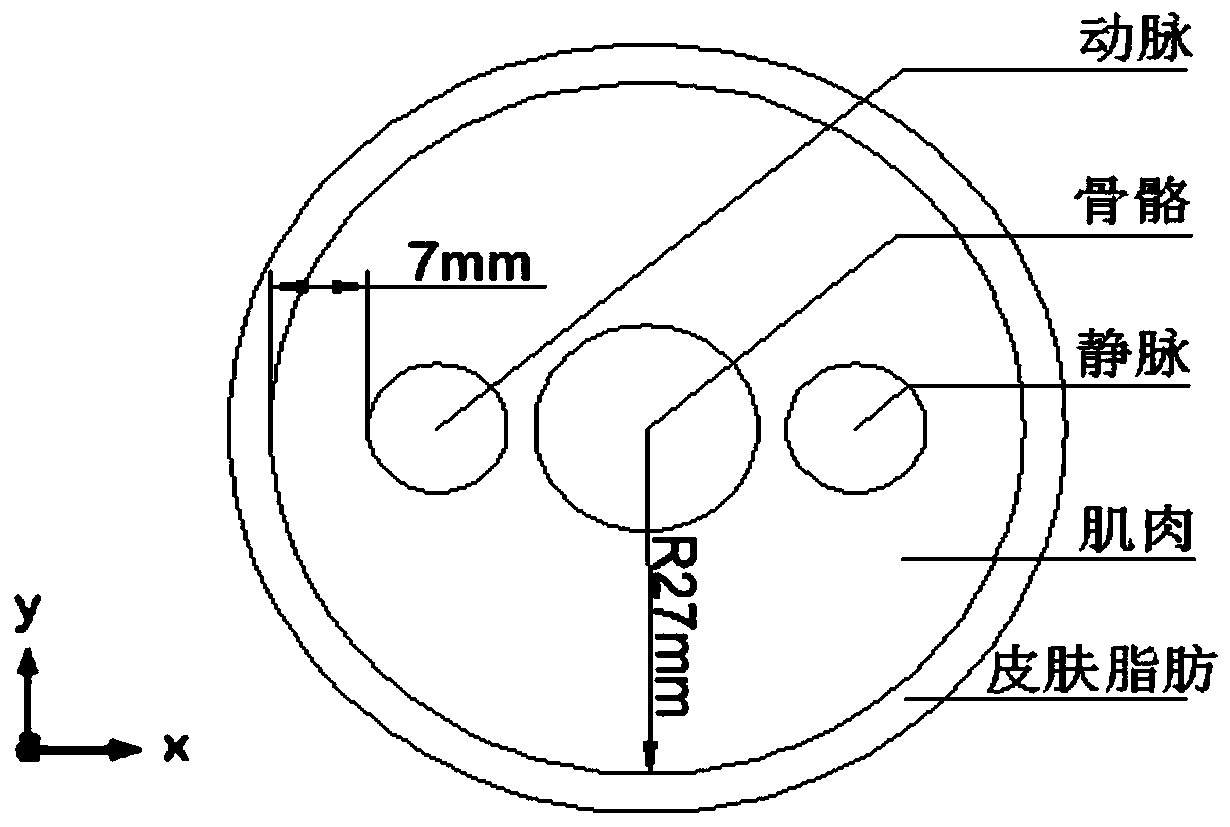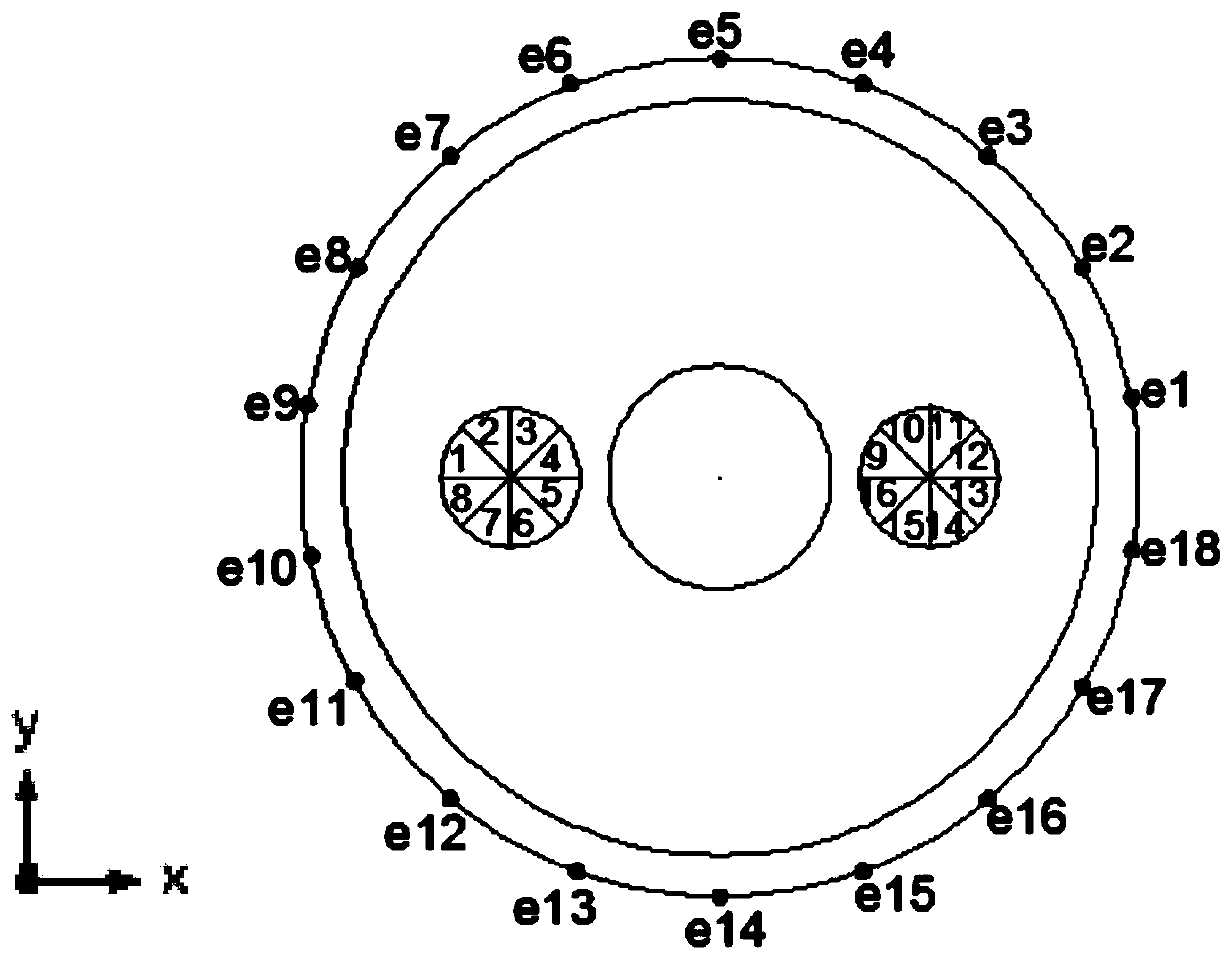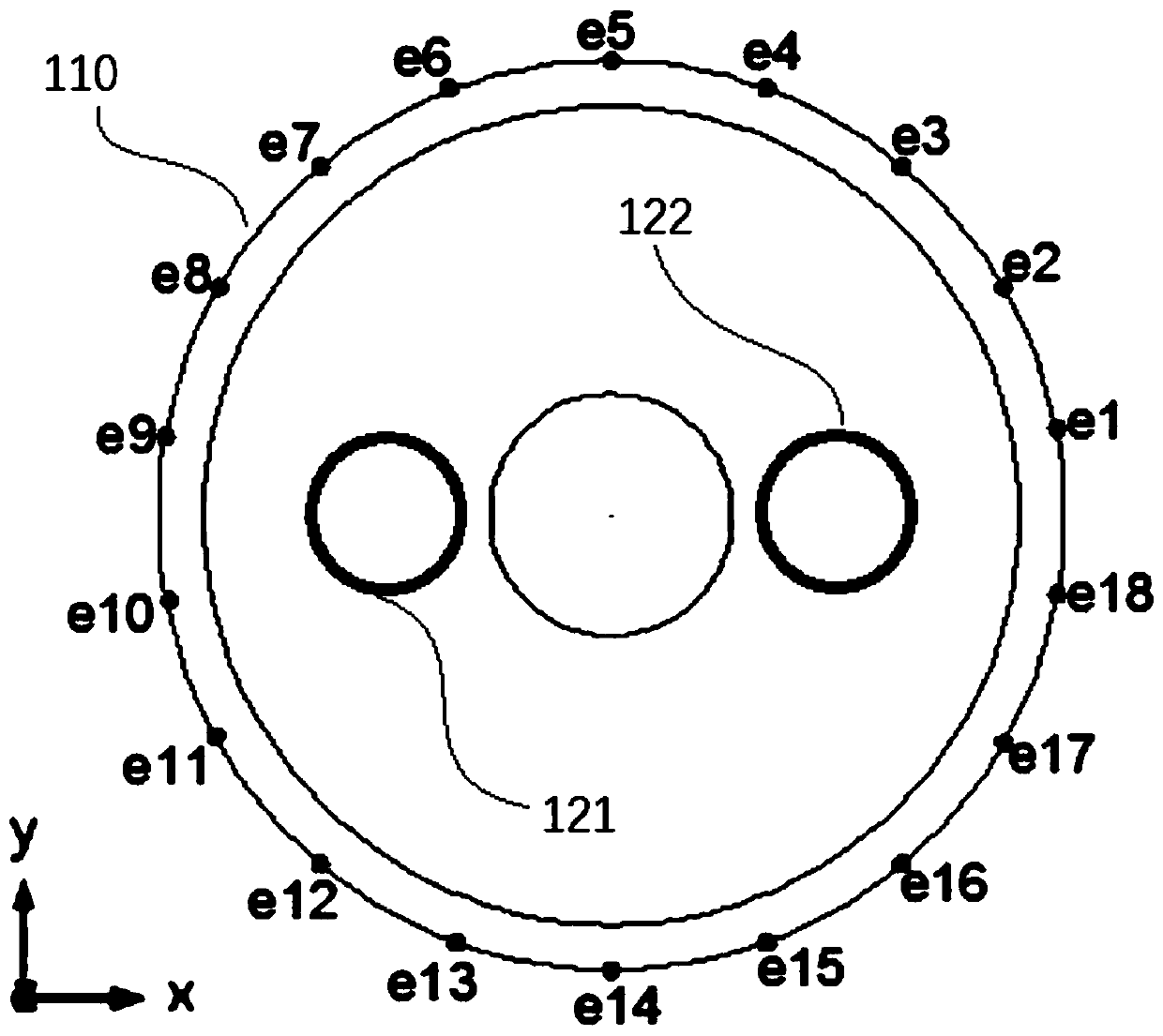Flow velocity distribution reconstruction method for multi-electrode electromagnetic flowmeter
A technology of electromagnetic flowmeter and flow velocity distribution, which is applied in the direction of calculation, 3D modeling, design optimization/simulation, etc., can solve problems such as ill-posedness, and achieve the effect of improving accuracy
- Summary
- Abstract
- Description
- Claims
- Application Information
AI Technical Summary
Problems solved by technology
Method used
Image
Examples
Embodiment 1
[0087] This embodiment is a solution method using standard Tikhonov to realize step S40, and the difference from the comparative example is:
[0088] Step S42, determine its continuous regularization parameter λ.
[0089] Specifically, in this embodiment, the continuous regularization parameter λ can be obtained through the GCV method of formula (4-2). Such as Image 6 As shown, the abscissa is the continuous regularization parameter λ, and the ordinate is the solution G(λ) of formula (4-2) corresponding to the continuous regularization parameter λ, which determines the optimal continuous regularization parameter λ.
[0090] In an improved embodiment of this embodiment, it can also be obtained by the L curve method: Specifically, in this improved embodiment, it is obtained by the L function in the MATLAB regularization toolbox (version 4.1), for different regularization parameter plots its residual norm and the regularization norm x 2The two-dimensional graph between , si...
Embodiment 2
[0097] This embodiment is a solution method using TSVD_TIK to realize step S40, the difference from Embodiment 1 is:
[0098] Step S42: Determine its continuous regularization parameter λ and discrete regularization parameter k.
[0099] Specifically, in this embodiment, both the continuous regularization parameter λ and the discrete regularization parameter k can be obtained through the GCV method of formula (4-2).
[0100] In some improvements of this embodiment, in the embodiment, the continuous regularization parameter λ can also be calculated by the L-curve method as in the above-mentioned embodiment.
[0101] Step S43, solve by TSVD_TIK method.
[0102] This embodiment is based on the Tikhonov regularization method, that is, on the finite-dimensional space, based on the least squares criterion, the regularization matrix and the regularization parameter are introduced through formula (4-3), and the solution is constrained, Transform the problem into an optimization prob...
Embodiment 3
[0109] This embodiment is a solution method using F_TIK to realize step S40, the difference from Embodiment 2 is:
[0110] Step S42, determine its continuous regularization parameter λ.
[0111] Specifically, the process of obtaining the continuous regularization parameter λ in this embodiment may be the same as step S42 in the first embodiment or an improved embodiment of the first embodiment.
[0112] Step S43, solve by F_TIK method.
[0113] Compared with Embodiment 2, this embodiment is based on the Tikhonov regularization method, that is, in a finite-dimensional space, based on the least squares criterion, the regularization matrix and regularization parameters are introduced through formula (4-3) , constrain its solution, transform the problem into an optimization problem, but finally solve it by the F_TIK method.
[0114] Specifically, the solution of the calculation F_TIK method is transformed into
[0115]
[0116] In the formula, λ is the regularization paramet...
PUM
 Login to View More
Login to View More Abstract
Description
Claims
Application Information
 Login to View More
Login to View More - R&D
- Intellectual Property
- Life Sciences
- Materials
- Tech Scout
- Unparalleled Data Quality
- Higher Quality Content
- 60% Fewer Hallucinations
Browse by: Latest US Patents, China's latest patents, Technical Efficacy Thesaurus, Application Domain, Technology Topic, Popular Technical Reports.
© 2025 PatSnap. All rights reserved.Legal|Privacy policy|Modern Slavery Act Transparency Statement|Sitemap|About US| Contact US: help@patsnap.com



